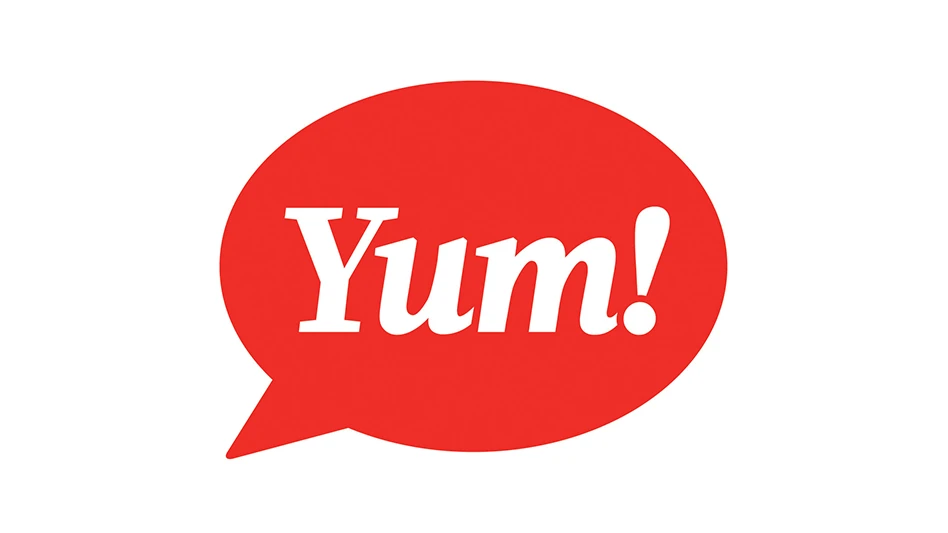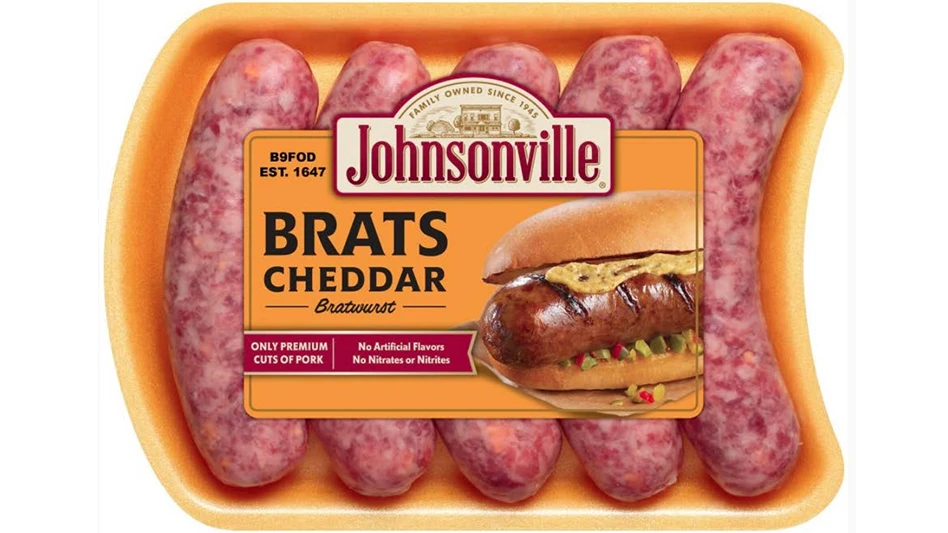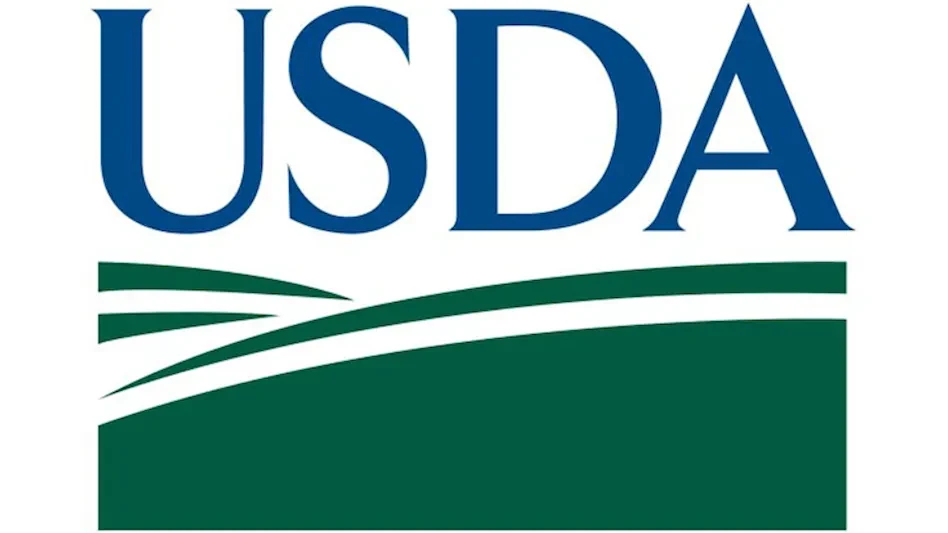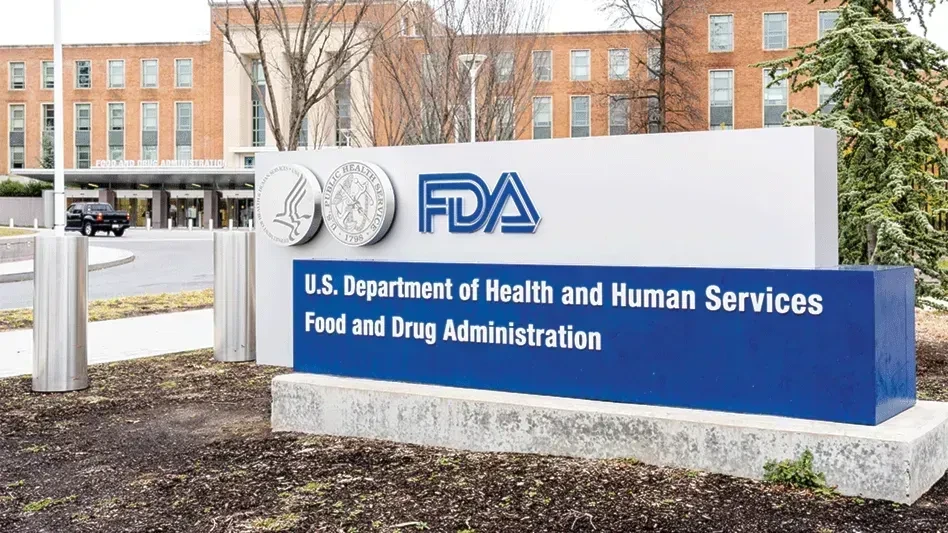
By Lisa Lupo
Photos by Parker Michels-Boyce
Its product may consist of only three key ingredients, but Sabra’s combination of chickpea paste (with only chickpeas from family farms of the Pacific Northwest), tahini, and soybean oil has enabled the company to gain a 60% share of the U.S. hummus market. Not only is this emerging market estimated to reach $1.1 billion by 2022, according to Market Research Future, but Sabra is smack in the center of that growth, with its passion for bringing center-of-plate positioning of hummus to North American consumers. Used here today, primarily as a dip or spread, hummus is a main dish in the Middle East — for breakfast, lunch, or dinner. And that is exactly the tradition Sabra aims to bring to North America.
Sabra hummus is made of chickpeas and tahini with soybean oil, a little garlic and salt, and citric acid and potassium sorbate to maintain freshness. A variety of consumer-inspired garnishes top it off, then it is packaged and ready to sell. But it’s not quite as simple as it sounds. Not only is Sabra keenly focused on innovation, but hummus production is not without its food safety and quality challenges.
Ever since its founding in Queens, N.Y., innovation has been at the heart of Sabra. Always tapped into the trends of the day, while understanding that Americans’ tastes would change, Rabbi Yehuda Pearl, who began his career as a butcher, placed his stake in Mediterranean cousine. He purchased a 50% share of Sabra and focused in on plant-based hummus, with a recipe he felt would resonate with Americans.
Since that time, the company has undergone a number of mergers and acquisitions: Strauss and Pepsico are now 50/50 partners and Pearl is a consultant; the production has moved to Virginia with a new plant built in 2008 and expanded in 2018. Sabra went international in 2011, selling products in Canada, then, in 2012, producing product in Mexico sold under the name Obela there and in Australia, New Zealand, and The Netherlands. Although Sabra also sells guacamole, the Virginia plant produces only hummus products.
HUMMUS INGREDIENTS. There are tens of thousands of varieties of chickpeas, but only a single variety is ever used in Sabra hummus, and it is produced by a cooperative of family farmers in the Pacific Northwest (PNW). Similarly, the company uses unique types of tahini, all produced globally and then mixed together to ensure consistency in every lot. Regardless of whether it is a main ingredient of the hummus or a secondary ingredient in a garnish, everything that goes into a Sabra product is also non-GMO.
Sabra executives visit the PNW region a few times each year, not only to inspect the family farms, but to simply “visit in the garages with their families and be in the fields for harvest,” said Senior Director of Strategic Sourcing and Procurement Susan Hickey. “We deal with 80 to 110 family farmers every year, depending on their rotational crop,” she said. Chickpeas are a desirable agronomic crop, as the plants put nutrition back into the soil, and the dry climate and fertile soil of the PNW make it ideal for chickpea production.
But Sabra products are about more than their ingredients, said Chief Technology Officer Cherie Floyd. “We want to have a great ‘feel good’ food. It’s not just about how it tastes and looks, it’s how sustainable it is,” she said. “With hummus’ main ingredient, chickpeas, being such a beneficial rotational crop and the resulting hummus a delicious and nourishing food, I like to think about Sabra as a rejuvenator. From soil to consumer, it helps rejuvenate consumers as a wholesome, satisfying food.”
But a “feel good” food extends even beyond its production, extending into the community, she said. One way that Sabra does this is through its Plants with a Purpose (PWP) garden — an onsite area worked by employees for the benefit of employees. Those who work the garden can take produce home for free; others can purchase the produce at low cost; and some of the produce is provided to local food banks. The company also attempted to bring more production to the local economy in 2013, working with Virginia Commonwealth University researchers and 11 Virginia farms to grow chickpeas locally. The effort, however, was unsuccessful as the Virginia climate turned out to be too wet and humid for successful production.
As such, production really encompasses a lot more than food, Floyd said. “There needs to be a lot more to food companies than making great food.” That’s not, in any way, to disparage the importance of making great food. In fact, Sabra has a number of food safety and quality programs to ensure its product consistently meets its Gold Standard.
THE FOOD SAFETY PROCESS. At Sabra, said Senior Director of Global Quality and Food Safety Rob Mommsen, “Food safety culture is the number one priority. I don’t have any trouble getting money needed for food safety.”
Food safety has always been a part of the company’s production, but, like other companies that have been through major recalls and have learned lessons they are willing to share with the industry, Mommsen openly discussed the Sabra recall of 2016. Due to concerns over Listeria monocytogenes, which was identified at the manufacturing facility but not in tested finished product, the company recalled all but its organic hummus. The recall led to a number of improvements, which have made it “probably the safest refrigerated food plant in the U.S. if not the world,” said Mommsen, who rejoined Sabra after the recall to strengthen its food safety practices and policies.
Today, food safety is in evidence throughout the manufacturing process from receipt of goods to shipment of finished product:
- Chickpea cleaning. Chickpeas are unloaded into a surge hopper onto shaker tables to remove foreign objects. But only rarely will any objects be found, as the PNW cooperative has the exact same equipment through which the chickpeas are run before being shipped. From here the chickpeas go into a pressure cooker, which uses computer-controlled thermal processing to ensure cooking at a temperature exceeding 212°F, which kills any bacteria and results in a product that is very close to commercially sterile, Mommsen said. Once cooked, non-killed spores can still regenerate, so Sabra prevents that through quick cooldown to below 40°F. At that point, he said, “The chickpea paste is now ready to be made into hummus.”
- The tahini room. As the most restricted area in the entire plant, the room in which the tahini barrels are opened and the product is mixed and pumped into the piped system is off-limits to all but an authorized few. To ensure this, the door adjoining it to the processing area can be opened only from the inside, having no handle on the outer side. The pallets used in this room never leave the area and the barrel tops are sprayed down with a cleaner before they are opened. Every day at 4:00 a.m. and 4:00 p.m., the entire system is taken down for top-to-bottom cleaning. The food safety steps in this area are so critical because, Mommsen said, “If we were to contaminate this system, the plant would be down for three days.”
- A closed system. From this point on, the product flows in a closed system, with no further exposure until opened by the consumer. The chickpea paste and tahini are piped from their tanks into a mixer with the oil and additives. The resulting hummus is piped into the containers, any garnishes added, a plastic seal applied, and the lid placed.
- Testing. Even with its preventive controls, Sabra’s testing is extensive — with both an internal Sabra-run lab, and an onsite third-party lab for all its finished product and pathogen testing — enabling fast, onsite results. Every four minutes, cups are pulled from the line; then every two hours, a composite of these is tested in a multiplex PCR system which can produce results for Listeria, Salmonella, and E. coli at the same time. The plant takes 1,000 environmental swabs each month and maintains pathogenic rates of 0.3% or less — well below the unofficial FDA level of 1.0%, Mommsen said.
- Dead or alive. Beyond that, Sabra uses a Listeria detection system that “picks up dead bugs and live bugs,” Mommsen said. “We don’t care if it’s dead or alive. If it lived once, it could live again.” It runs its environmental swabs through a PCR cycling machine which screens for 10 genes that can be pathogen indicators. It is a system that has become popular for foods that have seen major recalls, such as leafy greens, peanut butter, ice cream, and ground beef.
- Maintenance room. Sabra’s focus on sanitation is in evidence even in its maintenance room which Mommsen noted as “one of the cleanest I’ve ever been in.” Run by Matt Clark (“one of our rising stars”), the room’s organization and sanitation assist in food safety as the tools and parts are used into the food area.
- People traffic. “The biggest food safety problem is traffic patterns,” he said. Many of its low- and medium-care areas were changed to high-care after the recall, and Sabra-provided boots are worn by workers and visitors, and foot foamers are located at the entrances of all sensitive areas.





“It is interesting to see the change in culture; after the big recall, everyone got smart,” Mommsen said. And it’s not just Sabra associates who are aware of the impact. “FDA and the State of Virginia have all come in to see how we accomplished it so fast,” he said. The secret: “You have to get your GMPs and traffic patterns under control.”
QUALITY ASSURANCE. Meeting Sabra’s Gold Standard for quality means ensuring consistency. The greatest quality challenge with hummus is variability, Floyd said. With produce, there is always variability, and produce (chickpeas) makes up three-quarters of it product. “So you have to try to maintain something the consumer can rely on, on a consistent basis,” she said.
When that quality is maintained consistently, it shows with the final product epitomizing the Gold Standard. As explained by Research Chef Sam Wallis, within the round plastic container of hummus:
- The “hill shoulder” (the hummus shape around its edge within the container) is shaped like a rounded hill.
- The center “nipple” looks like a Hershey’s Kiss.
- From the center to the shoulder there are regular, consistent ripples that create a “voluptuous and creamy appearance.”
- The color is an even beigish tan, visible through the sides and half-clear top of the transparent container.
“People eat with their eyes,” Floyd said. “For us, the visual appeal is as important as the taste.” For both appearance and taste, she said, it’s not enough for Sabra to know that it is meeting consumers’ tastes and expectations, the company wants to know why.
“We do a lot of competitive tasting trying to determine exactly what it is that makes it so special,” Hickey said. “Why does it work?”

“So,” Floyd said, “We start in the kitchen. We start everything with a culinary standard; we look for things that are familiar but a little edgy.”
INNOVATION. That “kitchen” is in its Pearl Center of Excellence which was added with the 40,000-square-foot expansion of its Virginia plant in 2013 and is led by Corporate Executive Chef MaryDawn Wright. Sabra has a core group of consumers that loves hummus, but it is trying to reach others by using garnishes and providing recipes of things that are familiar, so hummus “is not too scary too try,” Floyd said. Thus, the Sabra kitchen is where “art meets science” in its efforts to change the way consumers experience hummus.
Along with creating consumer recipes, the kitchen develops menu items for restaurant accounts, arenas, and institutional facilities. The goal is to showcase hummus and introduce it to new consumers through its incorporation into foodservice menus and “having it be the star; the center of the plate,” Wallis said. This was displayed to QA through a tasting of Sabra’s hummus products, and a lemon raspberry hummus toast with drizzled honey, tomato basil hummus toast, a margherita pizza hummus flatbread, and a classic hummus with date syrup and chopped pistachio dessert.
Wallis faced a unique interview process, designed to ensure he would bring innovation to the kitchen. Not only were there discussions with Sabra executives, he was given a “Mystery Basket” challenge, similar to that of Food Network’s Chopped. “I was given ingredients and told, ‘You have one hour. Make three dips based on our classic hummus.’” If the dips Wallis provided then were anything like the dishes at our tasting, he was likely a shoo-in for the job.
In 2018, Sabra updated its packaging and logo, leaving its “iconic red rim unchanged” but color-coding the labels by flavor and increasing the transparency of the lid. While the original intent of the updated logo was to reimagine the Sabra sun as a chickpea sun, its shape is seen by many as a heart. In either case, just as the sun is the center of the universe and the heart is the center of the chickpea, so too are Sabra’s quality, food safety, and innovation taking hummus to the heart of the consumer’s plate.
The author is Editor of QA magazine. She can be reached at llupo@gie.net.

Explore the June 2019 Issue
Check out more from this issue and find your next story to read.
Latest from Quality Assurance & Food Safety
- Ferrero Group Invests $445 Million in Ontario Production Facility
- Nelson-Jameson Announces Grand Opening for Pennsylvania Distribution Center
- Taylor Farms Linked to Romaine E. coli Outbreak as Marler Clark Files Multiple Lawsuits Against Supplier
- IAFNS Announces Winners of Emerging Leader Awards for Food Safety, Nutrition
- FDA Shares Testing Results for PFAS in Bottled Water
- Provision Analytics Adds Food Safety Expert Jennifer Williams to Strategic Advisory Group
- Boston Sword & Tuna Protects Seafood Safety with Mettler-Toledo Metal Detectors
- IFT Releases New Resources to Aid Food and Beverage Industry in Sugar Reduction





